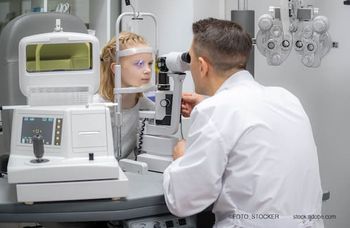
What ophthalmologists are thankful for
As we sit down together with our families and friends for Thanksgiving dinner this year, we thought reflecting on the great innovations in the field of ophthalmology since the turn of this new century seemed timely (a topic that is a natural by-product of the marriage between a retinal surgeon and a pediatric ophthalmologist!).
Editor’s Note: Welcome to “
As we sit down together with our families and friends for Thanksgiving dinner this year, we thought reflecting on the great innovations in the field of ophthalmology since the turn of this new century seemed timely (a topic that is a natural by-product of the marriage between a retinal surgeon and a pediatric ophthalmologist!). We tried to be as objective as possible while evaluating all potential innovations by basing our judgments on three elements:
Impact: This seems obvious, but this basically describes the influence an innovation has on the field of ophthalmology overall.
Uniqueness: Purely evaluates human ingenuity and the creative process in forming the innovation.
Clinical significance: This metric embodies qualities such as patient care/outcomes, physician decision-making influence, and disease modifying abilities.
More:
5. Telemedicine
Telemedicine rounds out our top 5 and represents a new frontier of our field focusing on two main principles: prevention and early disease detection. Prevention of disease has the ability to not only improve overall patient health, but also to save our healthcare system financially in the long run.
Related:
Early disease detection is critical in order to make our current therapies more effective by treating diseases at earlier stages. Technologies ranging from AMD home monitoring systems to nonmydriatic fundus photographs to screen diabetic retinopathy have significantly enhanced our efforts in this capacity and will continue to have advances for years to come.
4. OCT (Optical Coherence Tomography)
OCT is probably one of the most (if not the most) significant advances in ophthalmic imaging in our recent history. Incredibly, we are able to capture anatomical images from basically every part of the eye with OCT technology including the retina, optic nerve, and anterior segment.
Recent:
While initially conceived in 1991, it wasn’t until 2002 when time-domain OCT was introduced that this imaging modality truly started its journey to clinical utility.3 Later, with the advent of spectral domain OCT (2004-2007), widespread usage among ophthalmologists rose considerably and now is one of the most common ophthalmic imaging tests performed in the world.
3. Electronic Health Records (EHR)
While EHR may seem like an unusual choice to sneak into our top 5, just ask any ophthalmologist (or any physician for that matter) about the impact of EHR on their practice of medicine. No doubt their responses would be opinionated on both sides of the spectrum, to say the least. While EHR systems began as early as the 1960s, widespread adoption really took shape after the year 2000; currently, nearly 60% of all providers are utilizing EHR systems.2
Related:
While initial financial expenses and practice logistics were burdensome with its adoption, EHR has had an overall positive effect by facilitating inter-practice communications, enhanced structural organization of medical charting, ease of patient medical records access, and improved integration of billing/coding metrics.
2. Intraocular Lens (IOL) Implant Technology
We’ve come a long way from the days of Sir Harold Ridley implanting the first IOL in 1949.1 The vast array of technological advances in IOL technology is probably unmatched across all the fields of medicine.
Recent:
Lenses ranging from monofocal, multifocal, accommodating, toric, and even accommodating-disaccommodating (AD-IOLs) have forged a path of continual innovation, superior visual outcomes for patients, and even reducing-if not eliminating-dependence on glasses.
Related:
1. Anti-VEGF (vascular endothelial growth factor) medications
Hands down, the greatest innovation of our new century so far has to be anti-VEGF medications (Eylea, Lucentis, Avastin). These medications have had profound effects on patients with not only exudative age-related macular degeneration (wAMD) and diabetic macular edema (DME), but has demonstrated efficacy in retinopathy of prematurity (ROP) as well.
Recent:
One would be hard pressed to find any other treatment since the turn of the century that has completely altered the prognostic course of such a prevalent condition like wAMD; a dramatic turn of events from essentially a few minimally effective treatments prior to the introduction of anti-VEGF to present day with medications that can preserve/improve vision significantly. The effects of this revolutionary treatment modality have already become generational.or example, some wAMD patients currently being treated with anti-VEGF medications have parents who lived in a time without the availability of this treatment. These patients continually acknowledge how lucky they are to live in a time like this and that’s why it made #1 on our list.
More:
There you have it, our top 5 innovations in ophthalmology of the 21st century. Sure, your list might be different and there are other innovations that could have made the list, but this list represents significant advancements in the field of ophthalmology. So, when you are having Thanksgiving dinner this year, make sure to include an extra toast in honor of the great ophthalmological innovations of our time!
Recent:
References
1) Apple DJ, Sims J. Harold Ridley and the invention of the intraocular lens. Surv Ophthalmol. 1996;40:279–292.
2) http://www.practicefusion.com/blog/ehr-adoption-rates
3) Zysk AM et al. Optical coherence tomography: a review of clinical development from bench to bedside. J Biomed Opt. 2007 Sep-Oct;12(5):051403.
Newsletter
Don’t miss out—get Ophthalmology Times updates on the latest clinical advancements and expert interviews, straight to your inbox.



















































.png)


